Via Mother Jones, the Southern Poverty Law Center has published a report that examines the statues to Confederate heroes of the sort that sparked last weekend's violence in Charlottesville, Va. It should surprise no one with a modicum of historical knowledge that they went up during periods of exceptional violence against African-Americans:
[T]he argument that the Confederate flag and other displays represent “heritage, not hate” ignores the near-universal heritage of African Americans whose ancestors were enslaved by the millions in the South. It trivializes their pain, their history and their concerns about racism — whether it’s the racism of the past or that of today.
And it conceals the true history of the Confederate States of America and the seven decades of Jim Crow segregation and oppression that followed the Reconstruction era.
There were two major periods in which the dedication of Confederate monuments and other symbols spiked — the first two decades of the 20th century and during the civil rights movement.
Southerners began honoring the Confederacy with statues and other symbols almost immediately after the Civil War. The first Confederate Memorial Day, for example, was dreamed up by the wife of a Confederate soldier in 1866. That same year, Jefferson Davis laid the cornerstone of the Confederate Memorial Monument in a prominent spot on the state Capitol grounds in Montgomery, Alabama. There has been a steady stream of dedications in the 150 years since that time.
But two distinct periods saw a significant rise in the dedication of monuments and other symbols.
The first began around 1900, amid the period in which states were enacting Jim Crow laws to disenfranchise the newly freed African Americans and re-segregate society. This spike lasted well into the 1920s, a period that saw a dramatic resurgence of the Ku Klux Klan, which had been born in the immediate aftermath of the Civil War.
The second spike began in the early 1950s and lasted through the 1960s, as the civil rights movement led to a backlash among segregationists.
Mother Jones prepared this handy graph:
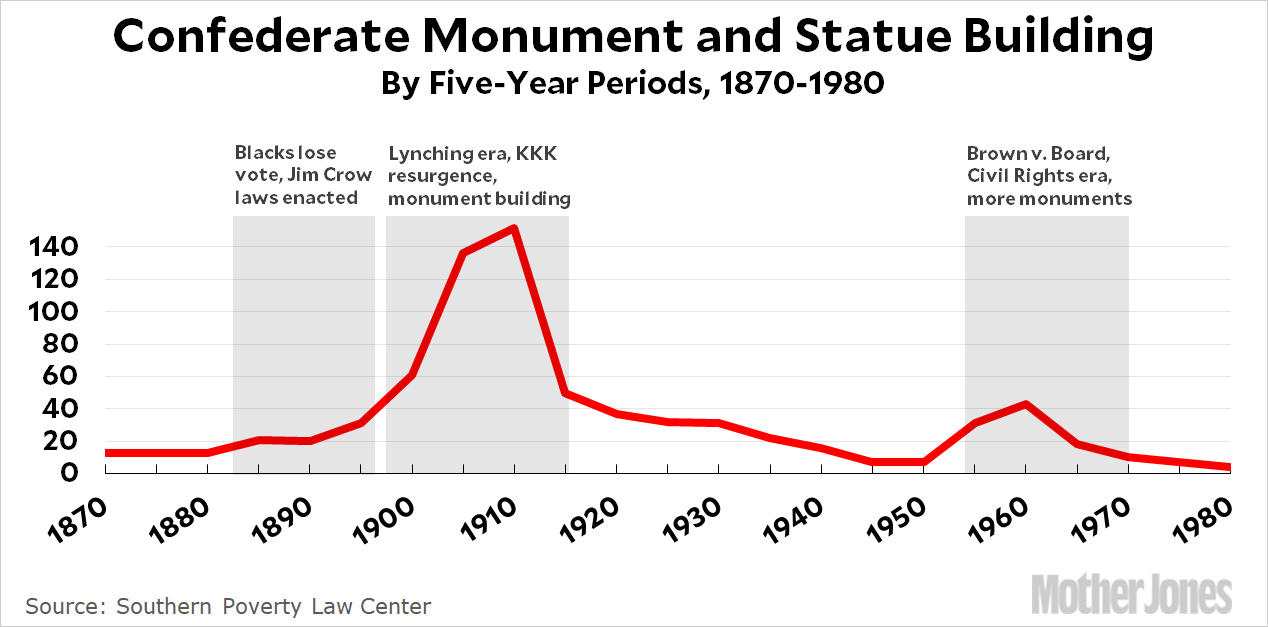
So, yes, these statues represent history: the history of Southern oppression of African-Americans throughout the Jim Crow era. Southern whites erected them as symbols of white supremacy and violence.
And they need to go away now.
Despite (or because of, unclear) normal Scottish weather, we killed an hour at the Laphroaig Distillery before heading out on the ferry back to the mainland. I claimed my rent on my one square foot of land* and my dram of the 10 year old. Then we got a couple more drams (in takeaway containers), a book, some lip balm, and rained upon. But I did manage this photo through the window:
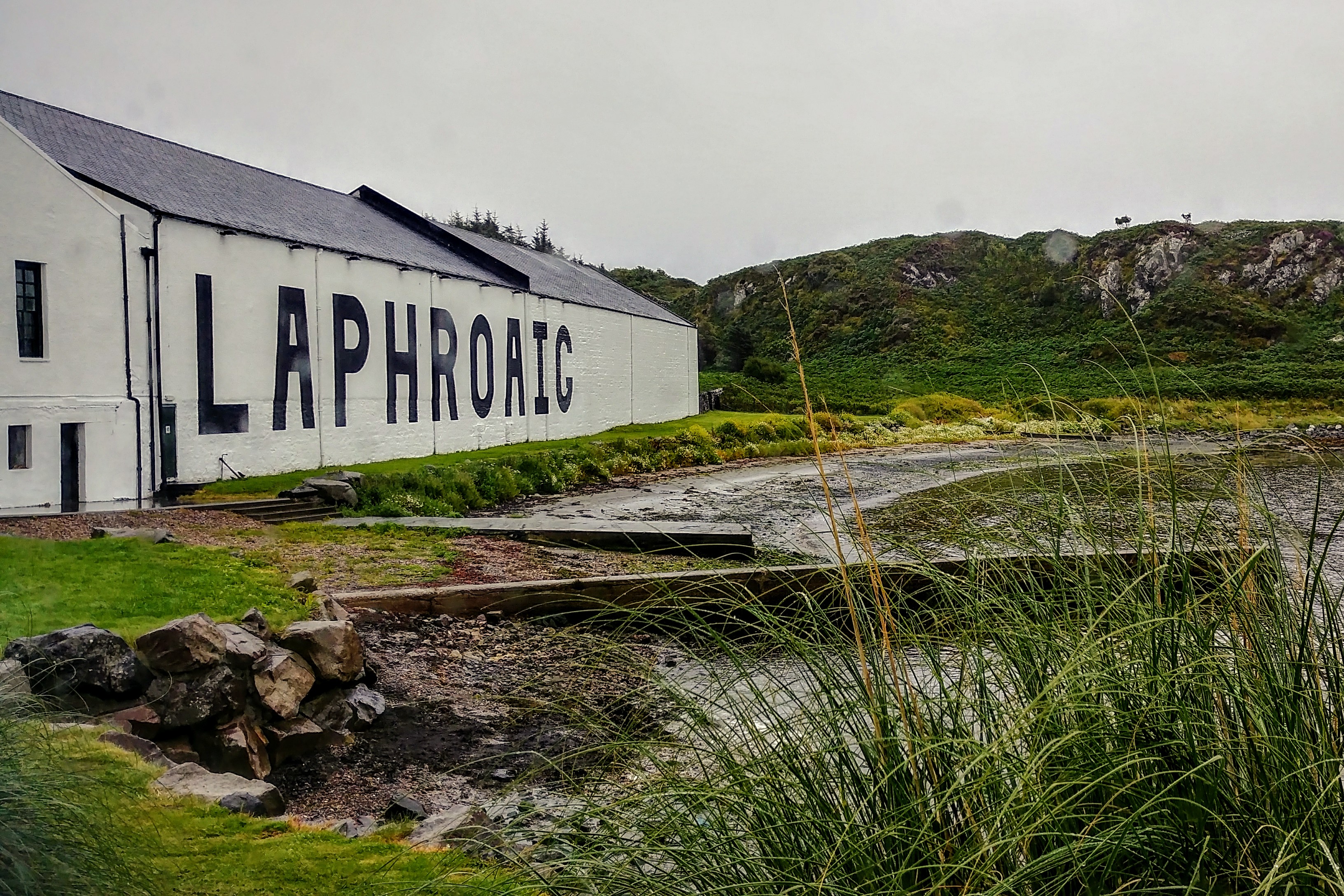
And then we headed to the ferry and said goodbye to Islay (for now):
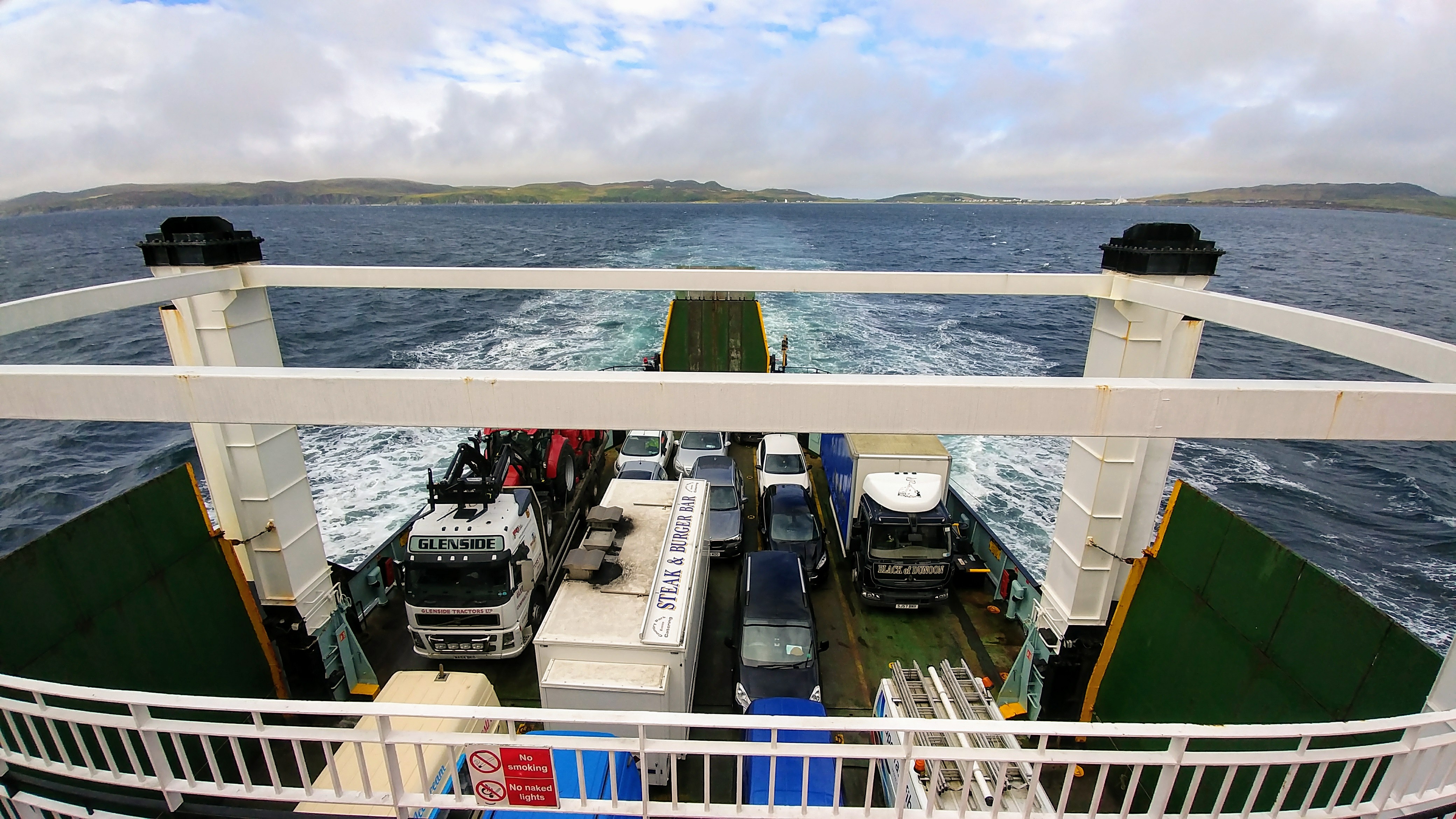
Now, as was common in days of yore, we're taking a few days to get back home. We stopped for lunch at the Drovers Inn outside Loch Lomond, and now we're in Glasgow.
* The coordinates on my certificate are the coordinates showing on the map there, but there are differences between what GPS says and what maps say all the time. I'm not sure if this is a mismatched datum or that Laphroaig's GIS don't agree with Google's. There are tons of reasons why this would be. But it's fun anyway.
When we started planning this trip in May, it didn't occur to us that we would spend half a day at the Ileach equivalent of a county fair, complete with purple sheep:

The day started here, however:
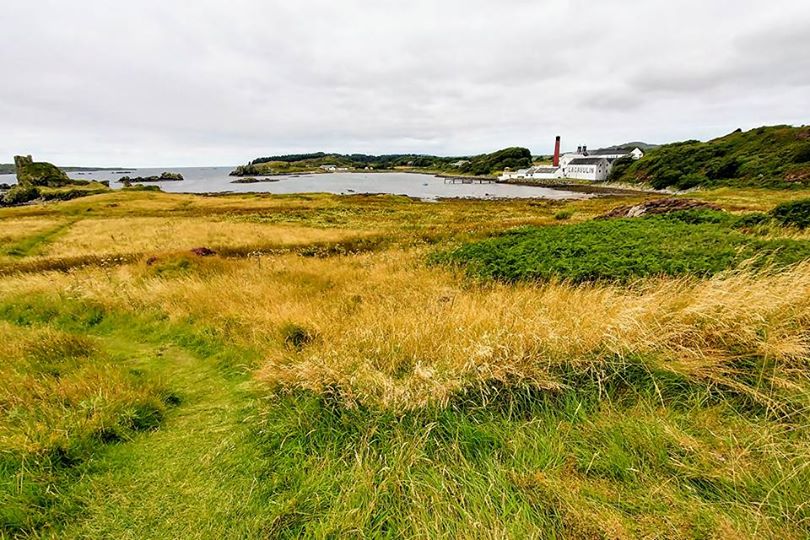
We took part in the warehouse tasting, in which Lagavulin's Iain Macarthur let us taste some malts pulled right out of the barrels, including a 35-year-old and a 23-year-old, worth well over £150 each.
Now we're chilling before catching live music at the only venue that's open anywhere near us tonight, the Islay Hotel.
Today, after a 6 km walk through squelchy bogs from Ardbeg up to Solam, and a drive to Bowmore, we had dinner in Port Ellen just before sunset. This was the scene after dinner:
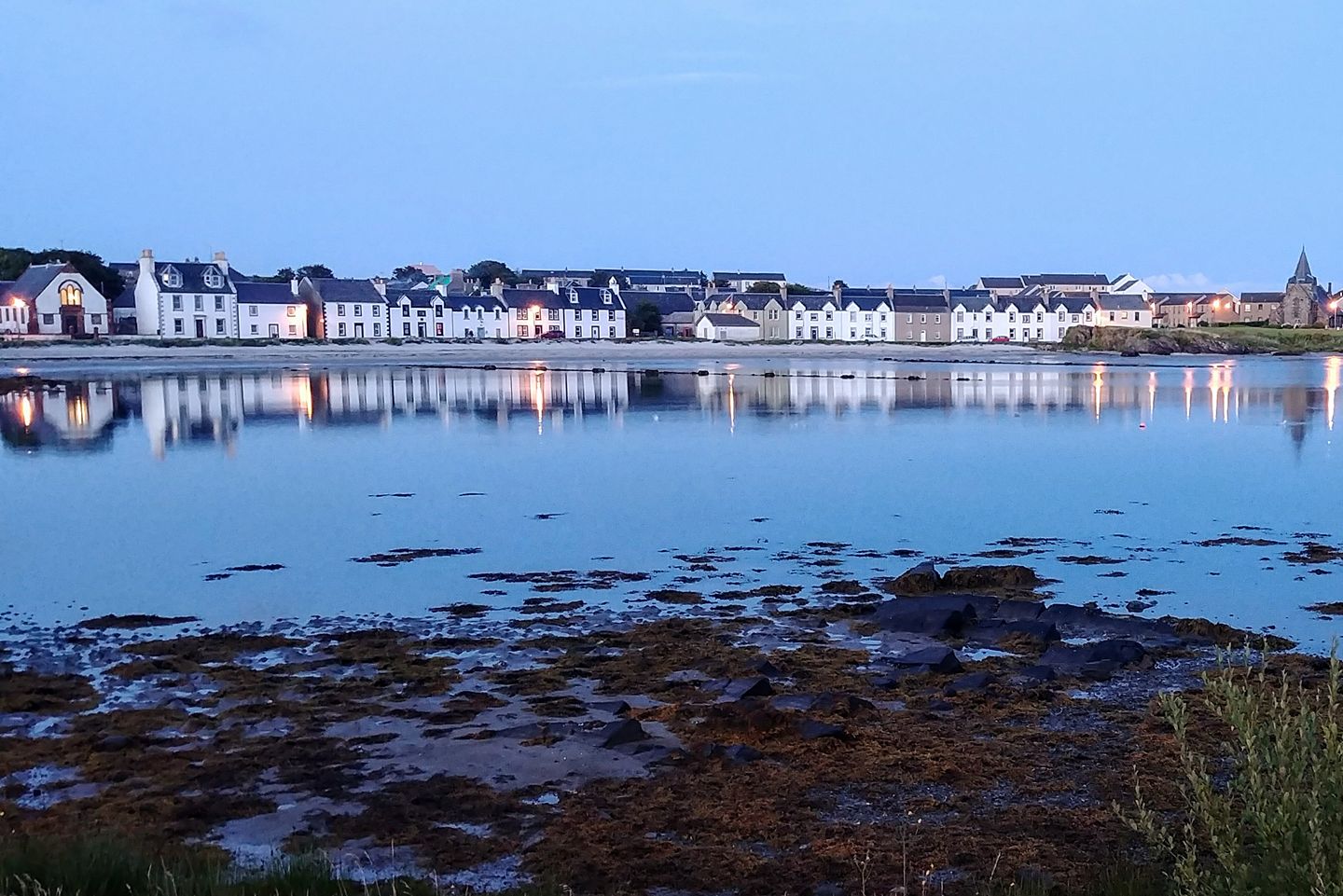
I've got 759 photos to get through when we get back to the US in a couple of days. Meanwhile, my phone camera seems to be doing an adequate job, as the shot above shows. I think my SLR will yield better results overall, but for holiday snaps, the phone doesn't suck. I like living in the future.
I'm on a train hurtling through the English countryside at 200 km/h and using WiFi.
Seriously, why can't we have a train like this back home? I mean, some Amtrak routes have WiFi, and Acela maxes out at 240 km/h between Boston and New Haven, Conn. But that's it. Chicago to Milwaukee trains plod along at half that speed, and the trains to St. Louis are even slower (and frequently delayed by freight traffic).
Where's the President's infrastructure investment plan that we've heard so much about?
Via Eclipse2017.org, Xavier Jubier has created an interactive map showing all the data for the eclipse that takes place three weeks from today.
I'll be staying here the night before, and I'm planning to watch from here the day of.
Crossrail, the UK's £14.8bn rail line connecting London's far western suburbs with its eastern ones, either represents the end of an era or the beginning of one, according to today's New York Times:
Before Britain voted last summer to leave the European Union, Crossrail was conceived for a London open to the world and speeding into the future. Now, with Brexit, the nightmare scenario is that this massive project, to provide more trains moving more people more quickly through a growing city, ends up moving fewer people more quickly through a shrinking city.
Extending roughly 110 km, it is built to speed about 200 million passengers a year in a kind of Y from far to the west of the city, in the county of Berkshire, through Heathrow, to the heart of London, forking east to Shenfield in Essex and to the neighborhood called Abbey Wood, on the historically neglected southeast side of the Thames River. Linked with the existing Underground subway network, it will be rechristened the Elizabeth Line, inserting what is in effect a new steel-and-wheels spine into Britain’s capital.
“The danger with Brexit,” [George Iacobescu, Canary Wharf’s longtime chairman said], “is that if Britain gets out of the European Union and doesn’t keep the U.K. an attractive place for financial institutions, they will think twice about growing here. The issue isn’t banks leaving Canary Wharf. Most of them have long-term leases. The issue will be the pace of growth.”
But that’s not quite true. Because of Brexit worries, construction plans for several of Canary Wharf’s new buildings have already been put on hold. And long-term leases can always be broken.
The subway will open to passengers in 2018.
Scottish authorities are making it difficult for Donald Trump to expand his money-losing golf course outside Aberdeen:
Two Scottish government agencies—the Scottish Environment Protection Agency and Scottish Natural Heritage, a conservation agency—say they will object to the Trump Organization’s plans to build a second 18-hole golf course at Aberdeen, known as the Trump International Golf Links. If they succeed in killing this expansion, it will be a major setback for Trump and raise doubts about the future profitability of the whole venture.
Industry experts say the value of many of Trump’s golf resorts is not in the daily management of the course itself but rather in the development and sale of housing. And according to the 2008 master plan that Trump convinced local planning officials to accept, he needs to build two courses before he is allowed to break ground on the profitable housing development.
But with the Trump Organization back to trying to get the second golf course built, Scottish regulators are making the case that Trump apparently doesn’t fully understand the development limitations. According to the Guardian, the Scottish Environmental Protection Agency is objecting to the Aberdeen expansion on the grounds that the Trump Organization’s plans for managing sewage are inadequate. Scottish Natural Heritage, meanwhile, says the company’s expansion plans don’t take into account the fragility of the nearby dunes and how they may affect the course as they shift—already a recurring problem on the first course, where greens are strafed by mini-sandstorms.
It turns out, Scots are really hard to bully, and (as the headline above says), they really do not like him.
Usually when I work from home, I get a lot done. Today...not as much. I've run errands, had two meetings outside the house, and (to Parker's horror) vacuumed.
Now I'm off to another meeting, with half the house un-vacuumed and many emails unread.
Articles also unread:
Now, time for a board meeting.
...is now available. Don't worry, you haven't missed anything.